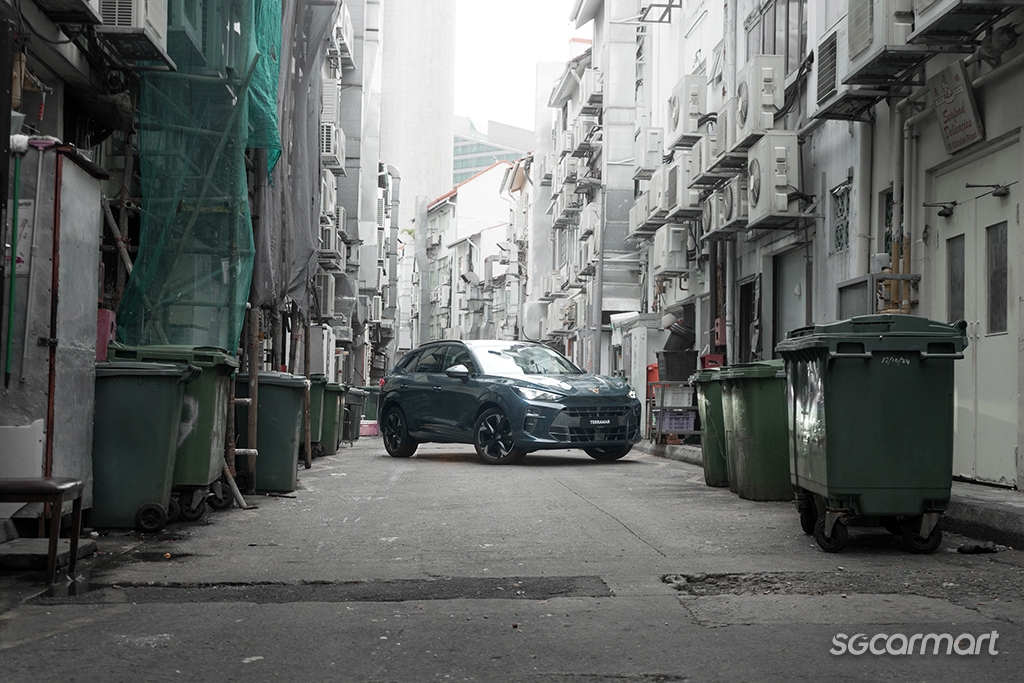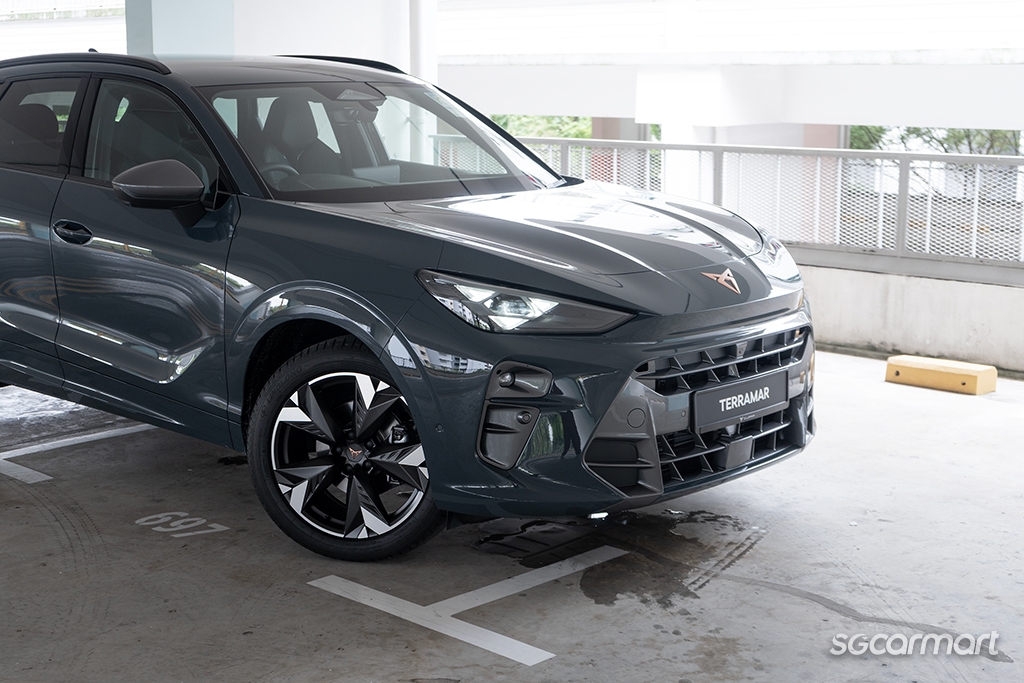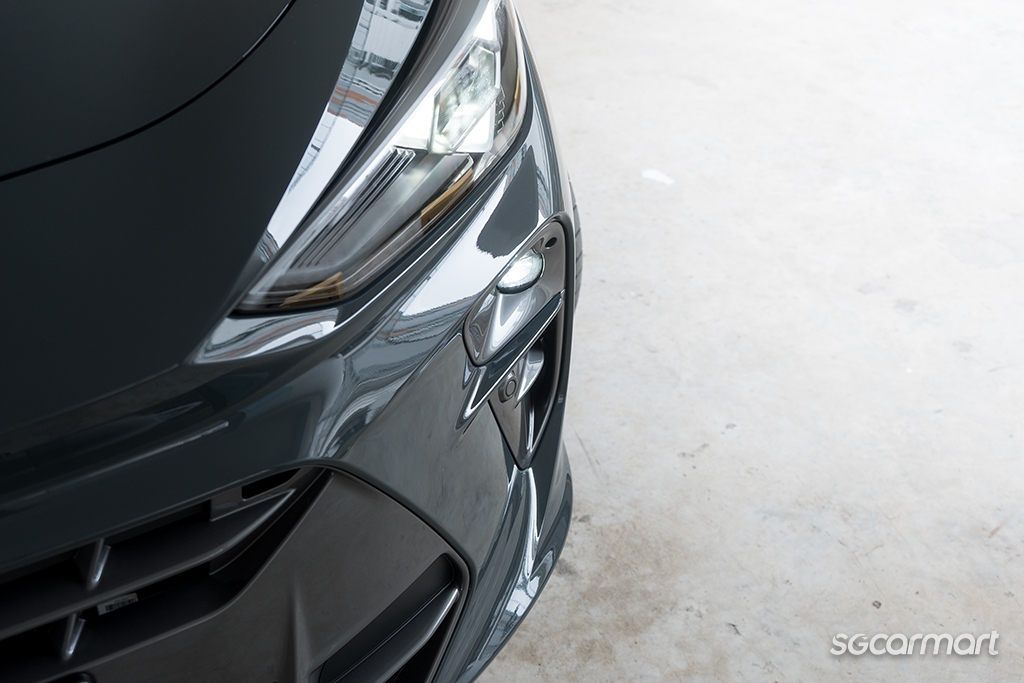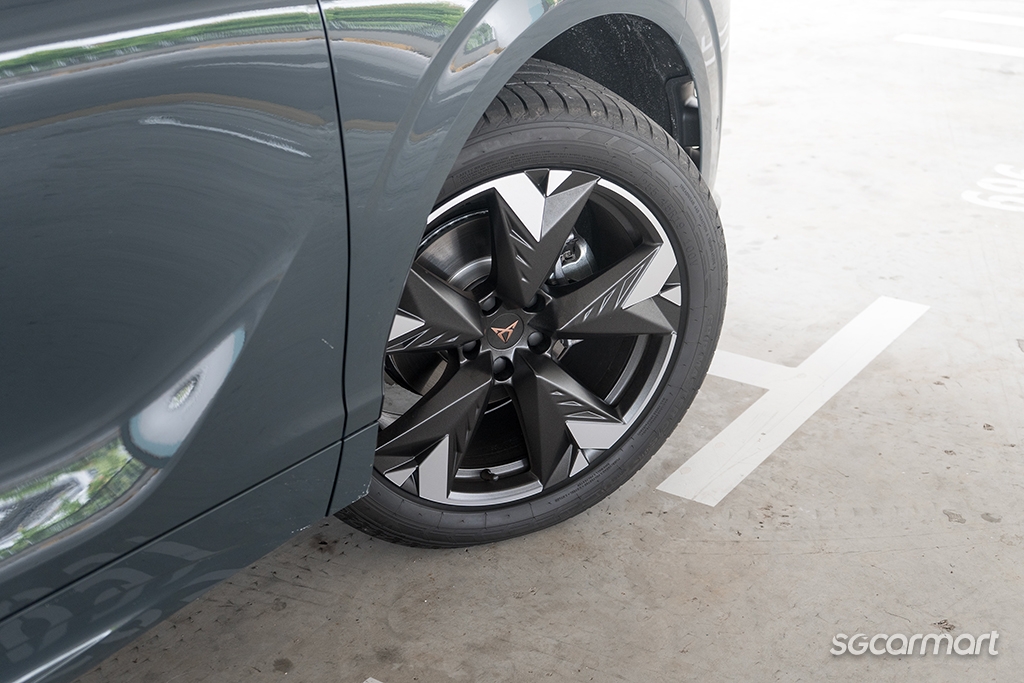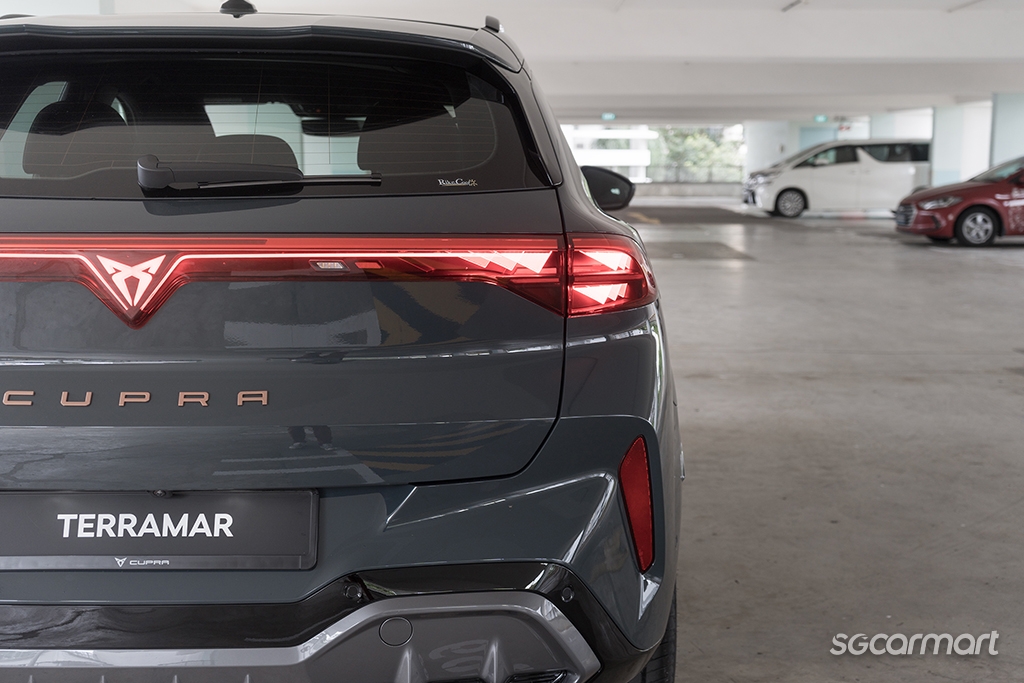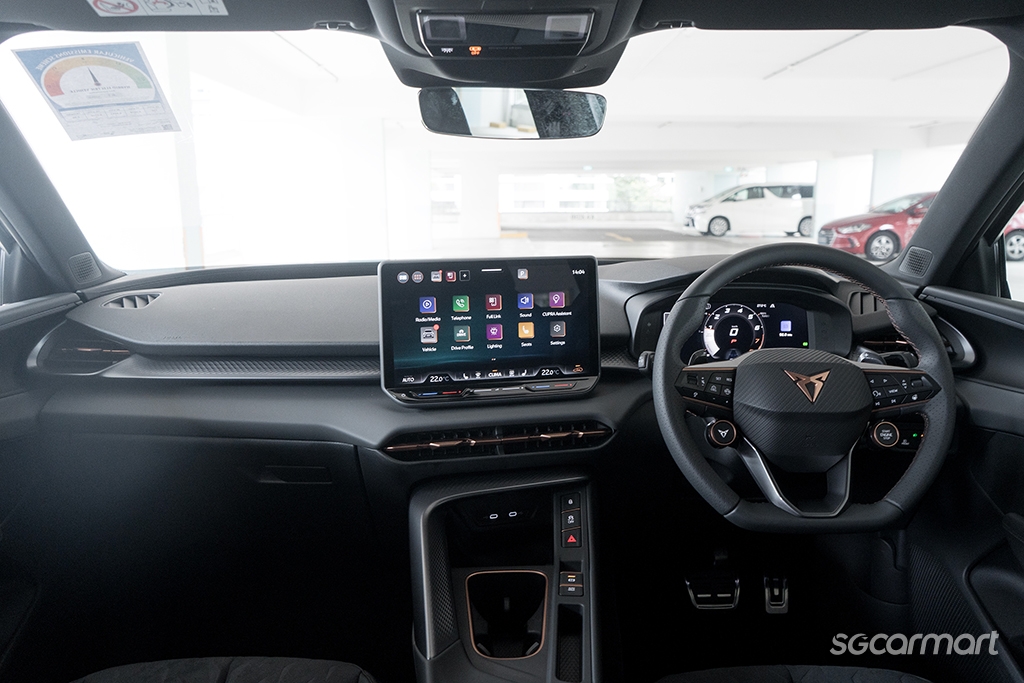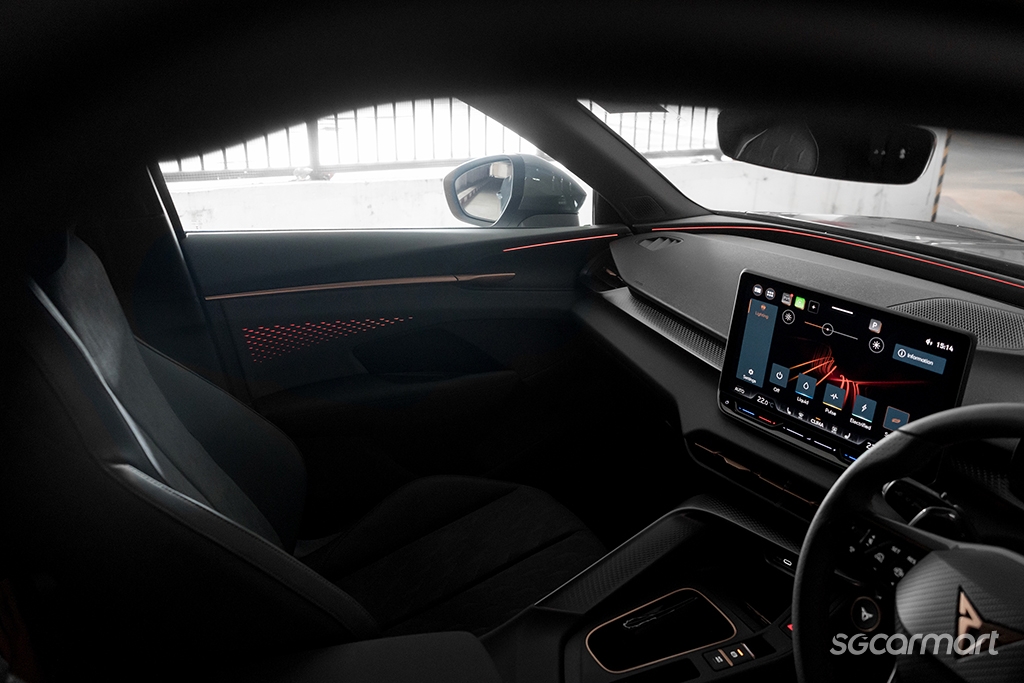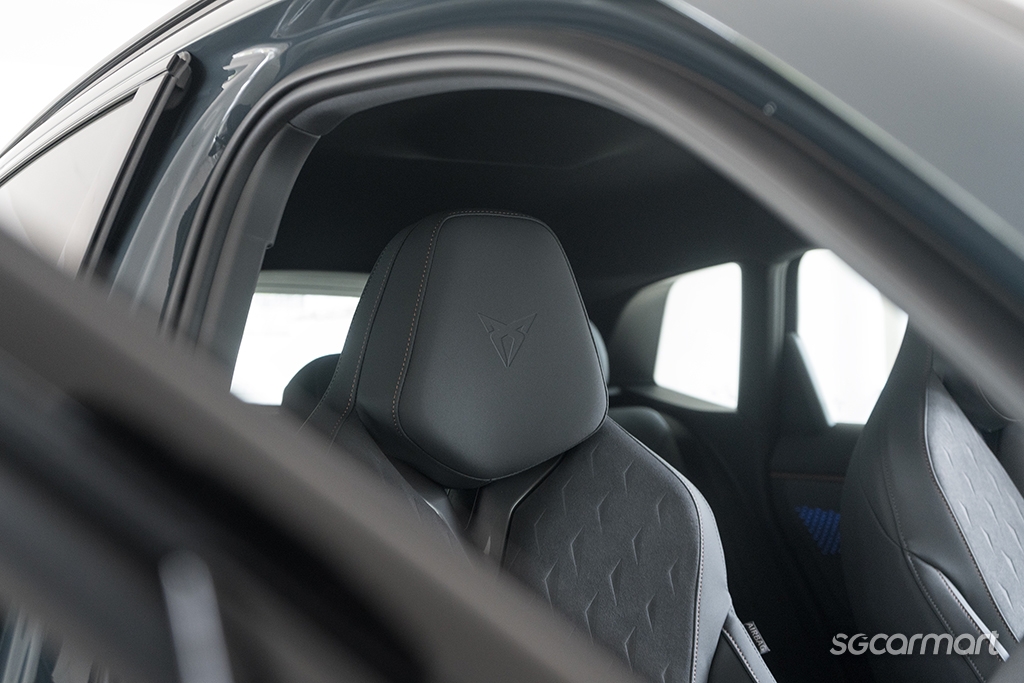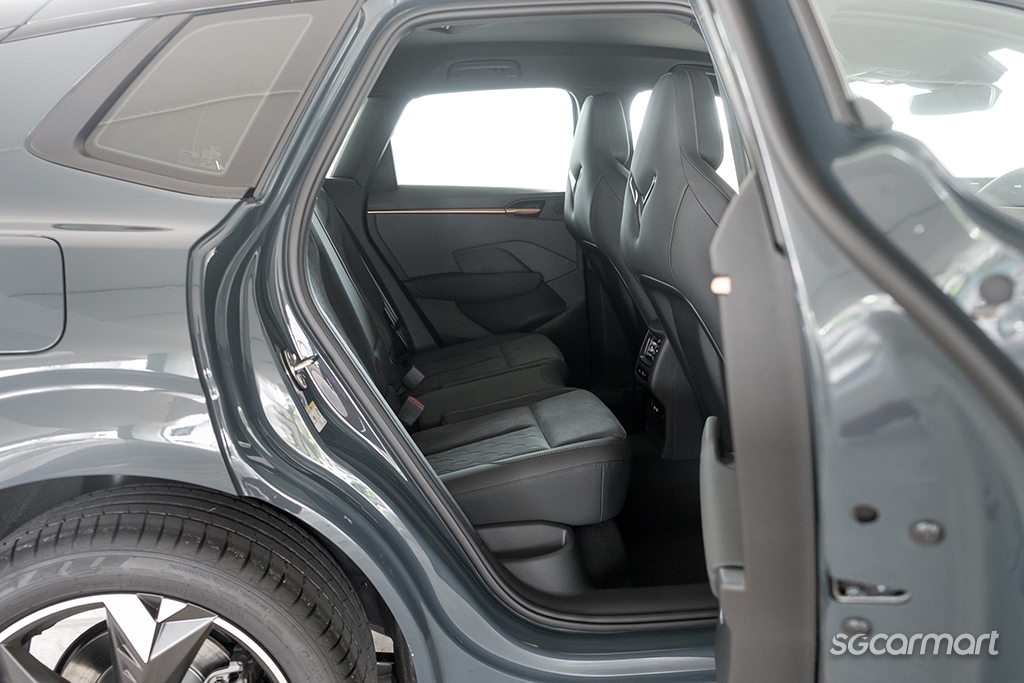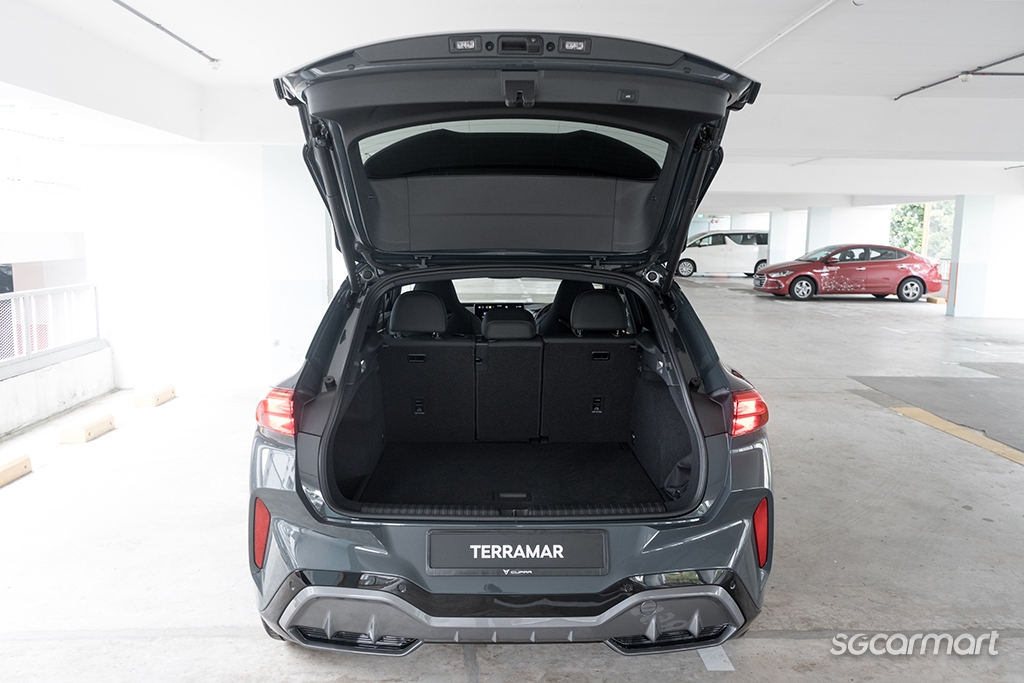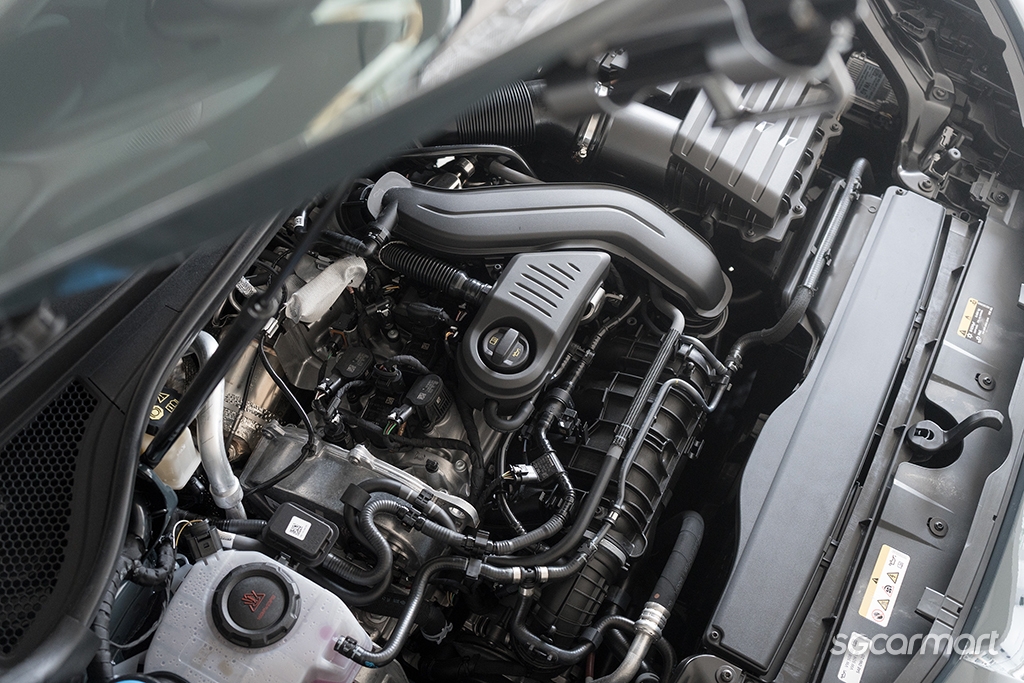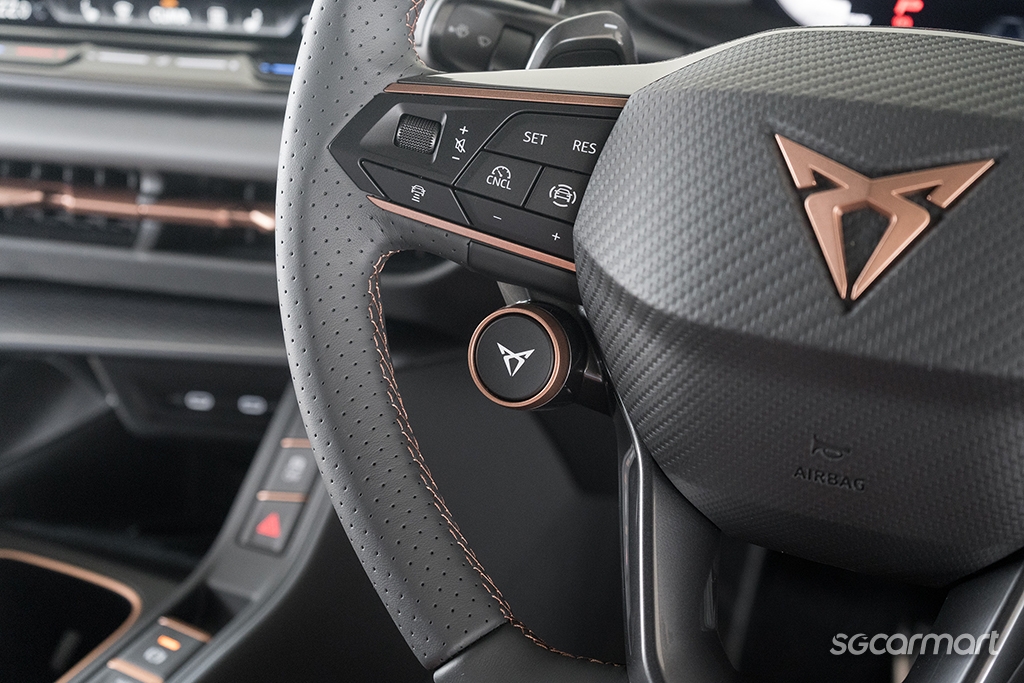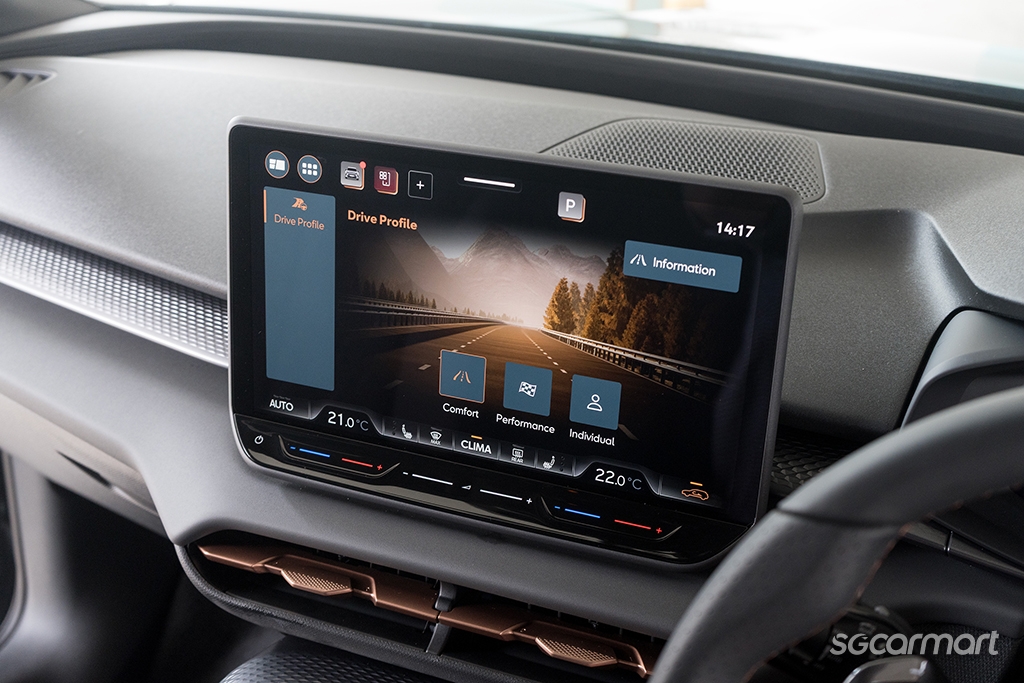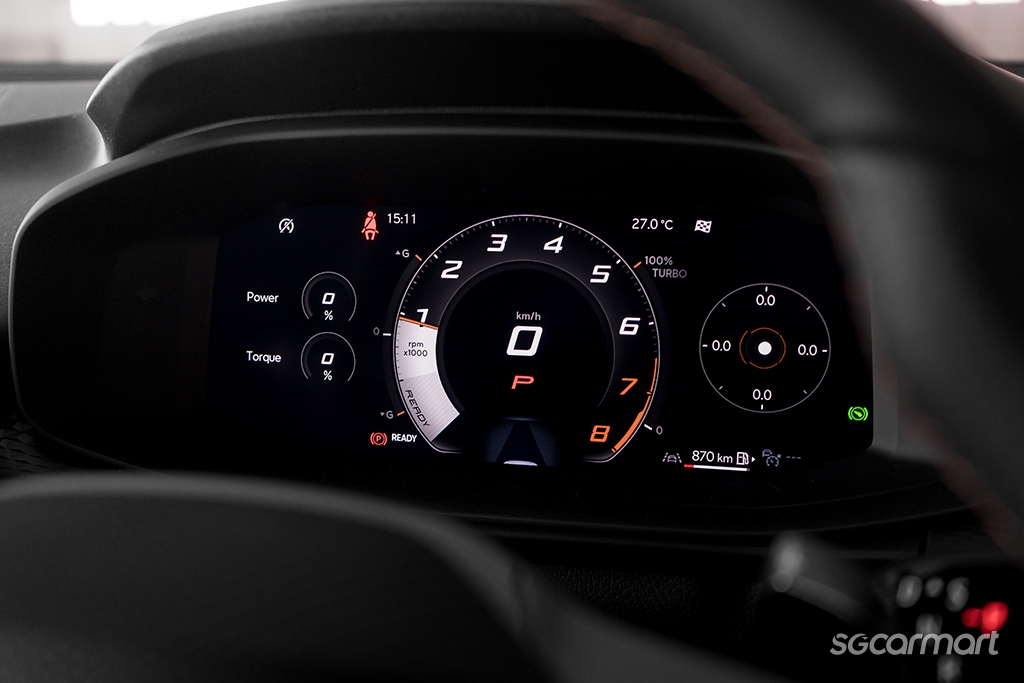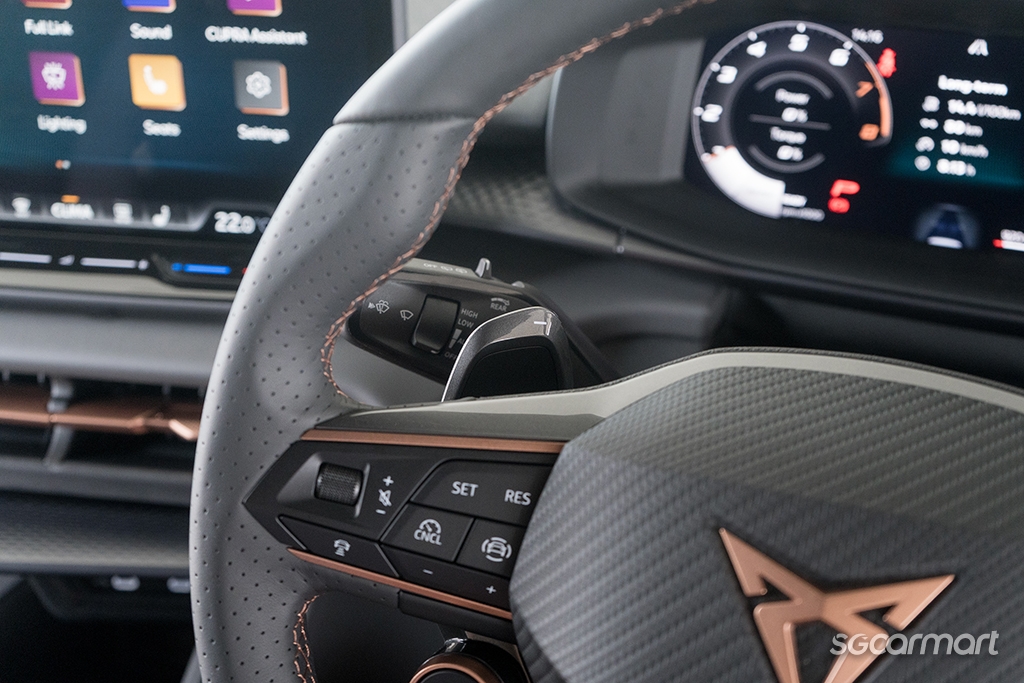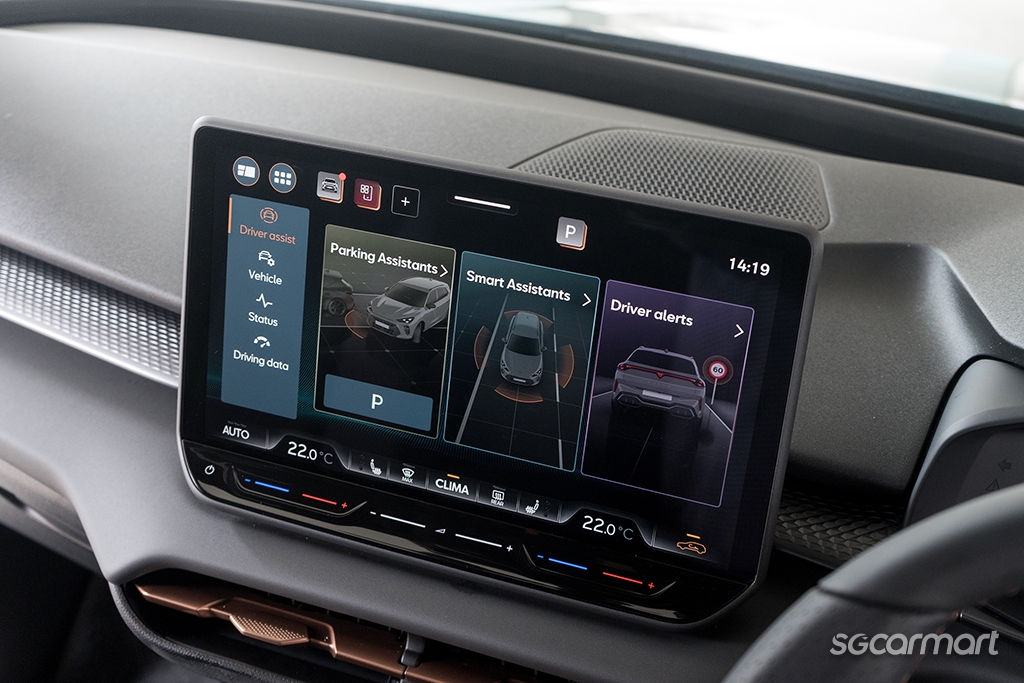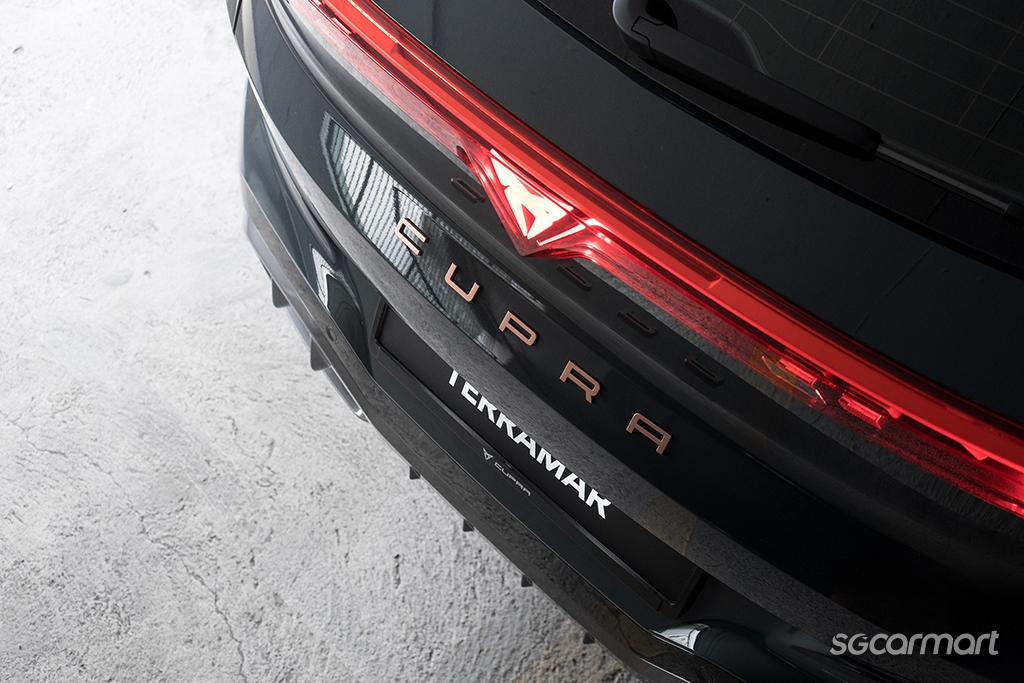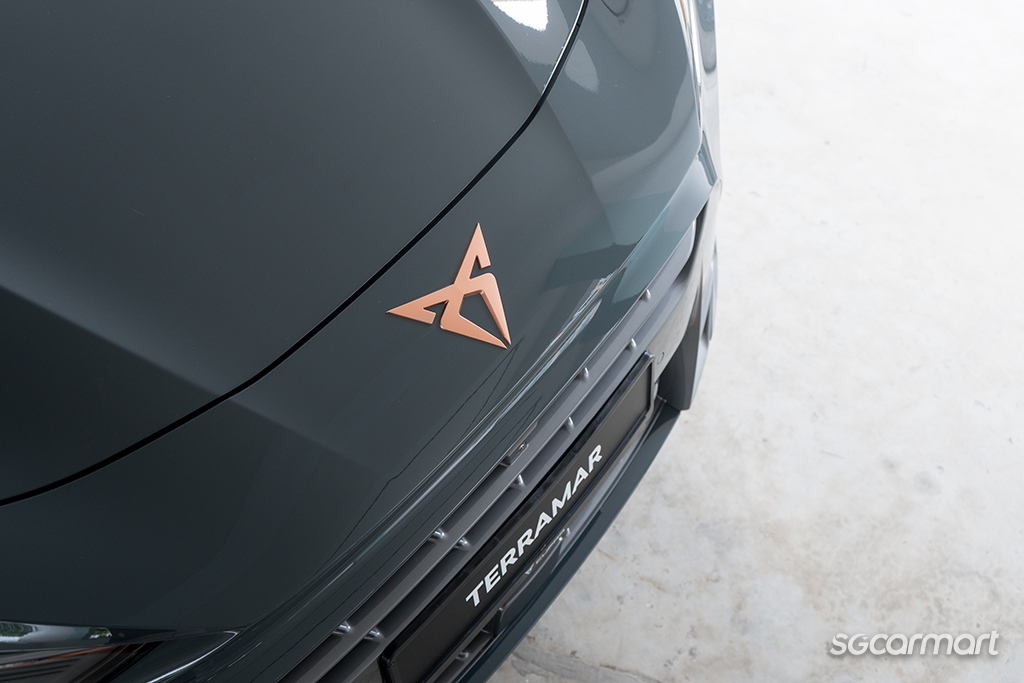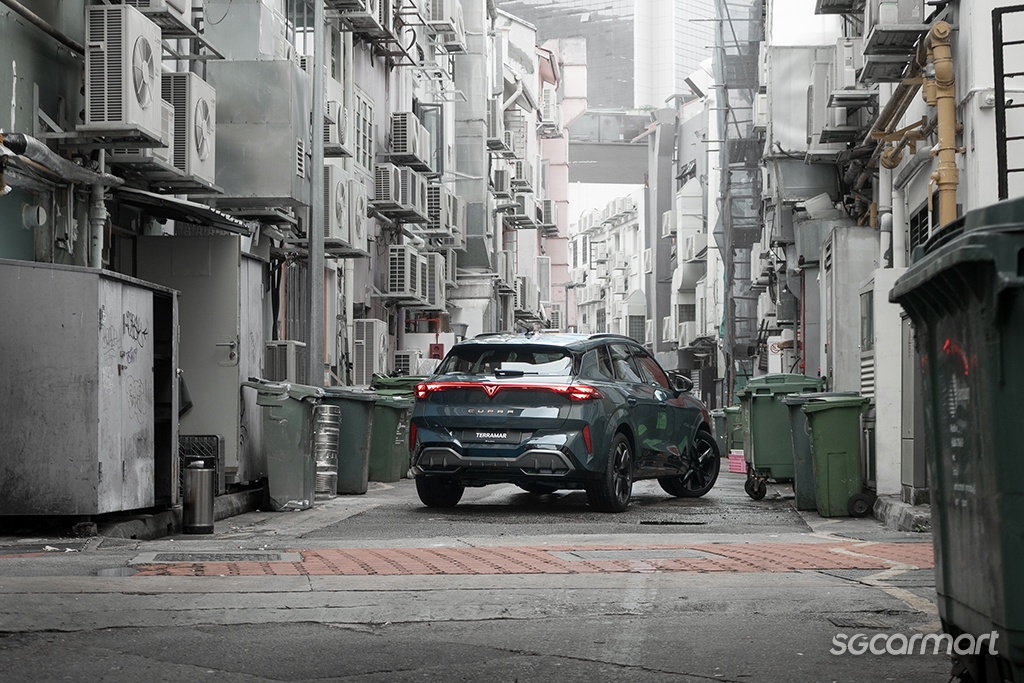Cupra Terramar 1.5 eTSI Review
11 Sep 2025|8,021 views
What We Like
Aggressive, distinct styling
Well-built and eye-catching interior with old-school cues
Spacious rear bench and boot
Sporty drive
What We Dislike
Could use a bit more power under the hood
Will probably confuse those with older-school perceptions of Cupra
Pricey
Extending the shelf lives of pure combustion-powered models already seems an effortful task for car manufacturers that have declared full pivots to electrification. In true rebel fashion, however, Cupra has taken things one step further: By introducing a brand new face to the lineup, now in 2025.
The Cupra Terramar, a mid-sized crossover, derives its name from a Spanish coastal town near the racetrack where the brand was born, amidst the sound of roaring engines and the smell of burnt rubber. But here's where another plot twist emerges; you probably wouldn't find this Singapore-specced Terramar out there doing hot laps, since one of its headlining (and perhaps eyebrow-raising) qualities here is its more subdued 1.5-litre mild hybrid engine. Rather than sonorous mania, this unit feels geared more towards sensibility.
Looking backwards - and in a confounding manner - rarely works as a good look for any brand. Still, the Terramar feels like exactly the sort of crowd-pleasing product that could unlock new horizons for Cupra: By landing amongst customers not yet attuned to the joys of full electrification, yet tantalised by its bold design vision and sportier outlook.
New name, (sort of) familiar face
Preceded by the Tavascan here in Singapore, the Terramar's styling actually feels familiar, but is no less outstanding in a crowded sea of high-riding competitors today. The brand's promise is once more brought to bear faithfully: If you're tired of crossovers that play it safe on the design front, this not-so-little one will thrill you.
The Terramar's scowling front end, described to be inspired by a shark's nose, is unmistakably Cupra-like with its massive grille. Triangular-shaped daytime running lights glare out onto traffic ahead, while triangles are also layered generously within the tail lamps flanking the rear light bar and illuminated badge. Alongside them, the car's lower roofline and wide stance accentuate its air of aggression.
These 19-inch rims are probably an orgamist's fantasy with their creases and folds; the Terramar's triangular obsession also continues at the rear with its tail light bar
This package is tied up neatly by the 19-inch wheels that the Terramar rides on, whose angular rims contain creases and folds that would probably make the most expert origamists swoon. If Hasbro were still in the business of making Transformers films, the Terramar would be perfectly cast as a Decepticon.
Practicality and quality cloaked in standout style
On the inside, the Terramar stays resolutely within its own lane too with a brooding cabin that's consistent with what we've come to love from Cupra.
There are eye-catching lashings of copper all over, for instance, while ambient lighting is done in a manner cohesive to the car's aggressive whimsy, with arrow-shaped perforations in the door cards rather than run-of-the-mill light strips. Cupra's sustainable intentions are even easy to appreciate with those Dinamica fabric sports seats, which offer excellent lumbar support.
Ambient lighting is done to perfection in the Terramar, especially with those arrow-shaped perforations on the door cards
What the eye-catching elements may obscure initially, however, is how solidly-built this interior feels, deferring neither to hard plastics nor to black gloss. With its plethora of physical controls, navigating the Terrama's dashboard takes minimal effort too. This may be our favourite Cupra steering wheel in recent memory, dotted with sensibly labelled buttons, and set against a generously-sized 10.25-inch digital instrument cluster with configurable, driver-focused layouts. (The latter feels undeniably superior to the small panels found on the Born and Tavascan).
The Terramar is also a stellar family car.
Its boot is a substantial 508 litres, and though it opts for a lower profile, headroom is still acceptable on the rear bench across all three seats. Legroom is fairly generous too, given its 2,680mm wheelbase, although the presence of a central transmission tunnel does ultimately mean that two will be far more comfortable here than three.
As mentioned, pop open the Terramar's sculpted hood, and what lies beneath might be surprising for a brand once associated with riotous combustion power: Not a 2.0-litre turbocharged engine, but a 1.5-litre unit with mild hybrid assistance.
Expectedly, performance from this relatively pint-sized heart isn't the sort that would set a drag strip ablaze.
On first glance, it doesn't help that ostensible reminders of the Terramar's potential to handle more power are dotted everywhere. The evergreen CUPRA mode button is here, for instance, but CUPRA mode itself isn't (you only get 'Comfort', 'Performance' and 'Individual'). It's a plain admission of the amount of power (or lack thereof) on offer: Praiseworthy for its honesty, though still a bit jarring.
That lovely instrument cluster is also arguably at its most magnetic when configured to display just a central speedo, flanked by torque and power readings on the left, and a g-force meter on the right. Again, however, these features feel quite mismatched to power output figures to the tune of 148bhp and 250Nm.
Leave those older-school preconceptions of the Cupra brand behind, however, and the Terramar instantly becomes more magnetic.
It's worth noting that the very engine it utilises here has the specific benefit of existing within the confines of Singapore's built-up traffic and lower speed limits. The Terramar consequently doesn't feel slow by most measures; it gathers speed quite willingly, and its seven-speed DCT is delightfully snappy, yet not too unobtrusive as to bury the car's sportier leanings entirely. At higher speeds, the occasional hesitation to downshift does mean that overtakes need to be measured out a bit more carefully – but the presence of paddle shifters helps greatly on this front anyway.
Furthermore, the Terramar's handling is remarkably tidy for its height. Its physical dimensions don't saddle it with too much heft, its steering rack is accurate, and its suspension tends to the stiffer side of things, yet settles quickly after fighting undulations and bumps; at higher speeds it's nice and stable too. With all of the above considered, the Cupra promise of machines with the ability to excite remains true.
How one ultimately judges the Terramar, then, probably comes back to how exactly they perceive of Cupra
Since it was spun off as an independent marque from Seat, the brand seems to have gone through a number of expansionary stages. The Cupra way was pure, smoky, combustion performance at first. Then it was electric. In recent times, things appear to have shifted slightly again, now emphasising standout exterior and interior design.
Admittedly, those who insist that every model wearing its copper badge must meet a baseline level of power may indeed be disappointed at the performance ceiling here. Here, unconventional aesthetics and modest performance shake hands firmly, resulting in some restraint and balance that you quite frankly would not have expected from Cupras of time past. In fact, the Terramar is such an all-rounder that… one could almost argue that it's the least rebellious member of the family today.
But look at Cupra more as a brand that puts out head-turning machines with sportier leanings rather than bonafide sports cars, and the Terramar immediately becomes more appealing.
This is a mild hybrid mid-sized crossover that won't turn away the (many) folks who still don't want an electric car, yet is still wrapped up in a trendy package, serves up the perfect amount of space for those with a family, and also offers decent punch out on the road. At the centre of its appeal? Strategic, crowd-pleasing positioning. The only pity is that at basically $250,000 at current COE prices, it's asking for quite a pretty penny for its combination of qualities.
Still, amidst the virtually innumerable competitors in its segment, the Terramar's tight balance between conforming to market norms yet standing out in a distinctly Cupra-like manner give it genuine magnetism. Brand new as it may be, this is a name that Singaporean drivers could gradually grow more familiar with.
Here are a few other cars worth considering!
What We Like
Aggressive, distinct styling
Well-built and eye-catching interior with old-school cues
Spacious rear bench and boot
Sporty drive
What We Dislike
Could use a bit more power under the hood
Will probably confuse those with older-school perceptions of Cupra
Pricey
Extending the shelf lives of pure combustion-powered models already seems an effortful task for car manufacturers that have declared full pivots to electrification. In true rebel fashion, however, Cupra has taken things one step further: By introducing a brand new face to the lineup, now in 2025.
The Cupra Terramar, a mid-sized crossover, derives its name from a Spanish coastal town near the racetrack where the brand was born, amidst the sound of roaring engines and the smell of burnt rubber. But here's where another plot twist emerges; you probably wouldn't find this Singapore-specced Terramar out there doing hot laps, since one of its headlining (and perhaps eyebrow-raising) qualities here is its more subdued 1.5-litre mild hybrid engine. Rather than sonorous mania, this unit feels geared more towards sensibility.
Looking backwards - and in a confounding manner - rarely works as a good look for any brand. Still, the Terramar feels like exactly the sort of crowd-pleasing product that could unlock new horizons for Cupra: By landing amongst customers not yet attuned to the joys of full electrification, yet tantalised by its bold design vision and sportier outlook.
New name, (sort of) familiar face
Preceded by the Tavascan here in Singapore, the Terramar's styling actually feels familiar, but is no less outstanding in a crowded sea of high-riding competitors today. The brand's promise is once more brought to bear faithfully: If you're tired of crossovers that play it safe on the design front, this not-so-little one will thrill you.
The Terramar's scowling front end, described to be inspired by a shark's nose, is unmistakably Cupra-like with its massive grille. Triangular-shaped daytime running lights glare out onto traffic ahead, while triangles are also layered generously within the tail lamps flanking the rear light bar and illuminated badge. Alongside them, the car's lower roofline and wide stance accentuate its air of aggression.
These 19-inch rims are probably an orgamist's fantasy with their creases and folds; the Terramar's triangular obsession also continues at the rear with its tail light bar
This package is tied up neatly by the 19-inch wheels that the Terramar rides on, whose angular rims contain creases and folds that would probably make the most expert origamists swoon. If Hasbro were still in the business of making Transformers films, the Terramar would be perfectly cast as a Decepticon.
Practicality and quality cloaked in standout style
On the inside, the Terramar stays resolutely within its own lane too with a brooding cabin that's consistent with what we've come to love from Cupra.
There are eye-catching lashings of copper all over, for instance, while ambient lighting is done in a manner cohesive to the car's aggressive whimsy, with arrow-shaped perforations in the door cards rather than run-of-the-mill light strips. Cupra's sustainable intentions are even easy to appreciate with those Dinamica fabric sports seats, which offer excellent lumbar support.
Ambient lighting is done to perfection in the Terramar, especially with those arrow-shaped perforations on the door cards
What the eye-catching elements may obscure initially, however, is how solidly-built this interior feels, deferring neither to hard plastics nor to black gloss. With its plethora of physical controls, navigating the Terrama's dashboard takes minimal effort too. This may be our favourite Cupra steering wheel in recent memory, dotted with sensibly labelled buttons, and set against a generously-sized 10.25-inch digital instrument cluster with configurable, driver-focused layouts. (The latter feels undeniably superior to the small panels found on the Born and Tavascan).
The Terramar is also a stellar family car.
Its boot is a substantial 508 litres, and though it opts for a lower profile, headroom is still acceptable on the rear bench across all three seats. Legroom is fairly generous too, given its 2,680mm wheelbase, although the presence of a central transmission tunnel does ultimately mean that two will be far more comfortable here than three.
As mentioned, pop open the Terramar's sculpted hood, and what lies beneath might be surprising for a brand once associated with riotous combustion power: Not a 2.0-litre turbocharged engine, but a 1.5-litre unit with mild hybrid assistance.
Expectedly, performance from this relatively pint-sized heart isn't the sort that would set a drag strip ablaze.
On first glance, it doesn't help that ostensible reminders of the Terramar's potential to handle more power are dotted everywhere. The evergreen CUPRA mode button is here, for instance, but CUPRA mode itself isn't (you only get 'Comfort', 'Performance' and 'Individual'). It's a plain admission of the amount of power (or lack thereof) on offer: Praiseworthy for its honesty, though still a bit jarring.
That lovely instrument cluster is also arguably at its most magnetic when configured to display just a central speedo, flanked by torque and power readings on the left, and a g-force meter on the right. Again, however, these features feel quite mismatched to power output figures to the tune of 148bhp and 250Nm.
Leave those older-school preconceptions of the Cupra brand behind, however, and the Terramar instantly becomes more magnetic.
It's worth noting that the very engine it utilises here has the specific benefit of existing within the confines of Singapore's built-up traffic and lower speed limits. The Terramar consequently doesn't feel slow by most measures; it gathers speed quite willingly, and its seven-speed DCT is delightfully snappy, yet not too unobtrusive as to bury the car's sportier leanings entirely. At higher speeds, the occasional hesitation to downshift does mean that overtakes need to be measured out a bit more carefully – but the presence of paddle shifters helps greatly on this front anyway.
Furthermore, the Terramar's handling is remarkably tidy for its height. Its physical dimensions don't saddle it with too much heft, its steering rack is accurate, and its suspension tends to the stiffer side of things, yet settles quickly after fighting undulations and bumps; at higher speeds it's nice and stable too. With all of the above considered, the Cupra promise of machines with the ability to excite remains true.
How one ultimately judges the Terramar, then, probably comes back to how exactly they perceive of Cupra
Since it was spun off as an independent marque from Seat, the brand seems to have gone through a number of expansionary stages. The Cupra way was pure, smoky, combustion performance at first. Then it was electric. In recent times, things appear to have shifted slightly again, now emphasising standout exterior and interior design.
Admittedly, those who insist that every model wearing its copper badge must meet a baseline level of power may indeed be disappointed at the performance ceiling here. Here, unconventional aesthetics and modest performance shake hands firmly, resulting in some restraint and balance that you quite frankly would not have expected from Cupras of time past. In fact, the Terramar is such an all-rounder that… one could almost argue that it's the least rebellious member of the family today.
But look at Cupra more as a brand that puts out head-turning machines with sportier leanings rather than bonafide sports cars, and the Terramar immediately becomes more appealing.
This is a mild hybrid mid-sized crossover that won't turn away the (many) folks who still don't want an electric car, yet is still wrapped up in a trendy package, serves up the perfect amount of space for those with a family, and also offers decent punch out on the road. At the centre of its appeal? Strategic, crowd-pleasing positioning. The only pity is that at basically $250,000 at current COE prices, it's asking for quite a pretty penny for its combination of qualities.
Still, amidst the virtually innumerable competitors in its segment, the Terramar's tight balance between conforming to market norms yet standing out in a distinctly Cupra-like manner give it genuine magnetism. Brand new as it may be, this is a name that Singaporean drivers could gradually grow more familiar with.
Here are a few other cars worth considering!
Car Information
CUPRA Terramar Mild Hybrid 1.5 eTSI DSG (A)
$229,900
CAT B|Petrol-Electric|16.4km/L
Horsepower
110kW (148 bhp)
Torque
250 Nm
Acceleration
9.3sec (0-100km /hr)
Thank You For Your Subscription.
- Exterior
- Interior
- The Drive
- Conclusion











































































